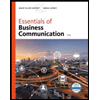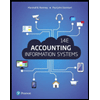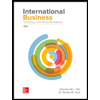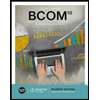QSO 330 Milestone 1 copy
.docx
keyboard_arrow_up
School
Southern New Hampshire University *
*We aren’t endorsed by this school
Course
330
Subject
Business
Date
Feb 20, 2024
Type
docx
Pages
6
Uploaded by SargentValorCoyote13 on coursehero.com
Zach Bowman
03/20/2023
QSO-330 Supply Chain Management
3-2 Milestone 1: Demand Forecasting and Sourcing
Executive Summary
:
Based out of Bentonville, Arkansas, Wal-Mart Inc. is the sector’s biggest retail outlet store. The company employed 2.2 million associates worldwide and operated approximately 11,000 stores, under 72 banners in 27 countries (Fraser, 2015). Walmart entered China in 1996, opening its first Super-center and Sam’s Club in Shenzhen, Guangdong Province. By August 2015, the company’s Chinese presence had grown to 416 retail stores, consisting of 404 Super-
centers and 12 Sam’s Club stores, covering 166 cities among 19 provinces, two autonomous regions and four municipalities nationwide, and employing more than 100,000 associates (Fraser,
2015). It is easy to see that Wal-Mart’s supply chain, distribution, and transportation has made the company a lot of money throughout the years. This is mainly due to the senior management team viewing this part of the company as a competitive advantage.
In this executive summary, I will focus on the demand forecasting of Wal-Mart in China via analyzing the supply and demand and how the make improvements to their business to increase their profits and performance.
Demand Forecasting
:
While examining Wal-Mart’s supply chain, it is necessary to first examine the demand forecast. This is the process of using predictive analysis of historical data to estimate and predict customers’ future demand for a product or service. It is essential that Wal-Mart keeps high-
demand products in stock at all times. It can be detrimental to run out of products that are needed
by the consumers at peak demand. At any given time, large retailers in China, such as Walmart, carried 15,000 to 20,000 stock keeping units (SKUs) in a typical store, and the assortment varied across stores (Fraser, 2015) Wal-Mart used distribution centers to ship products for suppliers using full truckloads or economic order quantities. Shipments to stores were consolidated at the
DC and shipped on the basis of individual store need. Walmart China operated two types of DCs in 2015: 11 perishable DCs and nine dry DCs. The latter, also referred to as “ambient DCs,” handled dry grocery items, consumables and general merchandise products, such as electronics, apparel and toys. The volumes shipped through the dry DCs were primarily cross dock, which accounted for approximately 85 per cent of the total, with the balance as staple stock, which were
pulled from inventory held in the DCs. Perishable DCs handled products that required temperature- controlled environments across three temperature zones: frozen (–8 degrees Celsius
or below; e.g., frozen food and ice cream), chill (0 to 10 degrees Celsius; e.g., meat, dairy, deli and produce) and normal (12 to 18 degrees Celsius; e.g., tropical fruits, chocolate and eggs). These perishable DCs operated with a flow- through design that used cross docking to bypass storage, transferring products directly from the receiving area to the outbound area for shipping to Walmart stores (Fraser, 2015).
Evaluation
:
When Lesley Smith arrived to Wal-Mart in China in 2011, she walked into a very fragmented business. The company had 29 autonomous buying offices across the country, with a serviceable dry network made up of five DCs servicing all stores. Logistics charged a warehouse fee to suppliers for using our network, so suppliers and buyers were not interested in going through our DCs because of the high costs and horrible service (Fraser, 2015). The company often did not meet minimum order quantity and the distributors would not deliver, affecting their order fill rates that cascaded into low in-stock and on-shelf availability. Or, they would overcompensate by ordering more inventory than needed, which affected their carrying costs.
Recommendations
:
Your preview ends here
Eager to read complete document? Join bartleby learn and gain access to the full version
- Access to all documents
- Unlimited textbook solutions
- 24/7 expert homework help
Related Questions
Coca-Cola is a well-established consumer products company with a strong position in the global market The sales of its core soda products have remained relatively stable for decades, yet the company has continued to grow and has remained extremely profitable. Discuss Coca-Cola's history in light of the statement that "generating a steady stream of new products to market is extremely important to competitiveness." Does Coca Cola's success disprove that statement? Is the company an exception to the rule or an example of its application?
arrow_forward
How can global systems enhance the value of a firm?
What went wrong at Target Canada?
( Included references pls)
arrow_forward
1. What is necessary for Square Pharmaceutical (in Bangladesh) to Measure and Manage return on Marketing Investment? Provide examples of Square's Marketing Investment?
arrow_forward
How does Darden Restaurants, described in the GlobalCompany Profile, find competitive advantage in its supplychain?
arrow_forward
https://www.forbes.com/2009/12/08/china-oreo-tang-cmo-network-kraft/?sh=5b7aaa9b691c
Describe in your own words the situation presented by the case in “How Kraft Won in China”.
Explain the successful marketing mix in terms of the case presented and the strategies focused on products, pricing, advertising, and distribution.
arrow_forward
Company Name: Lafargeholcim
Country: China
Qus no 01: What is the reason behind choosing this particular market?
Qus no 02: When did they enter the market and with what product?
Qus no 03: What is their entry mode?
Qus no 04: Entry mode; was it a good or regrettable choice? - critically analyse
Qus no 05: Was the business a success or failure in the new market? Why?
arrow_forward
Q.1: What microenvironmental factors have affected Target’s performance over
the past few years?
Q.2: What macroenvironmental factors have affected Target’s performance
during that period?
Q.3: By focusing on the “Pay Less” part of its slogan, has Target pursued the best strategy? Why or why not?
arrow_forward
To what extent can McDonald’s standardize for the Chinese market? What marketing strategy and program elements can be similar to those used in the United States and other parts of the Western world? Which ones must be adapted? Be specific.
arrow_forward
1.A)What is the nature of telecommunications industry?
B)How do the market players compete? How did they compete?
C)Loyalty scheme or price war?
D)How was the price war?How as the loyalty scheme? Did they ever collude? Was it tacit/open? What was government’s decision/action(According to Bangladesh)?
arrow_forward
Aqua Manufacturing Limited is one of the leading dry blend beverage companies in Jamaica. Theirportfolio includes Aqua Food Drink, La-Soy Lactose-Free, Porridge Mix, Whole Milk and ReadiMilk. These are all household names that stand for quality throughout the Caribbean, NorthAmerica, Canada and the UK. As a company with global intent, it has a strong businessrelationship with its suppliers. Either independently or through contract manufacturers, thecompany manufactures, markets, and sells a variety of products through its export division.
Required:A. What are FOUR (4) ways in which a firm like Aqua Manufacturing benefits from goodsourcing decisions?
arrow_forward
Executive Manager: The research about the connection between global sourcing and the human rights atrocities and environmental violations that take place in many foreign factories is accurate in some cases, but not in all. If such atrocities or violations do currently occur, then companies should be compelled to act.
However, in my opinion, among the foreign companies from which our firm buys parts and components, there is no consistent and visible proof that any such acts have occurred.
Given this, it is clear that increasing efforts to investigate wages and working conditions in these foreign factories is unnecessary.
The Executive Manager would most likely agree with which of the following statements?
A) Extra attention should be paid to the quality of the lives of the people working in the foreign companies, rather than just to working conditions.
B) There are no ethical reasons for the company to increase efforts to investigate wages and working conditions in the foreign…
arrow_forward
Explain how Amazon (self-checkout technology), expanding into the grocery industry in Canada, may be beneficial to Canada (a host country)?
arrow_forward
Reviewed Interim Results for the 26 weeks ended 26 June 2022Massmart is an African retail group, with total Group sales of R41.3 billion for the 26 weeks ended 26 June 2022. Through our widely recognised and differentiated retail and wholesale formats, represented in 403 Retail and Wholesale stores in 13 sub-Saharan countries, we have leading market shares in the general merchandise, liquor, home improvement and wholesale food markets. The Group’s key foundations of high volume, low cost, responsible business and operational excellence enable our price leadership.
Holders of Massmart Holdings Limited ordinary shares ("Massmart Shareholders") are hereby advised that the Board of Directors of Massmart Holdings Limited (“Massmart”) and the Board of Directors of Walmart Inc. (“Walmart”) have reached in principle agreement regarding the terms and conditions of a potential offer by Walmart to acquire all of the issued ordinary shares in Massmart Holdings Limited ("Ordinary Shares"), other…
arrow_forward
How has Alter modified its strategy? Why?
Do you think Altera’s new strategy will be successful? What are some advantages and disadvantages of the new strategy?
How do you anticipate Altera’s customers will react to this strategy? What are advantages and disadvantages for Altera’s customers?
What information does Flextronics have that its client do not? Why? How can Flextronics leverage this information?
How does IBM manage its suppliers in order to make its pull strategy more effective?
arrow_forward
What is the solution in the weak Positioning of Ford Company?
arrow_forward
Q4.1)
Discuss the motives for businesses to expand internationally.
arrow_forward
International Business Strategy Analysis (Question 1)
o Discussion on Tesco international business strategy utilised in Japan: is it multidomestic?
Discussion on benefits and risks of the international business strategy
o Discussion on the alternative international business strategy which can be utilized in Japan either with transnational as the alternative?
Please give detail information
After a discussion on all strategies as addressed in the course
arrow_forward
Explain the market concept of exporting crude oil from US to China. give details and resources please
(It's repetitive qiestion, please help)
arrow_forward
What is the Horizontal Integration Strategy of Tesla ?
arrow_forward
Q#03: State the strategies used by any firm operating in Pakistan to attract, retain and win back customers?
arrow_forward
Please watch the video, and answer the question.
https://www.youtube.com/watch?v=ElYNhGbOTOQ
1. What do you think are the effects/impacts of the COVID pandemic on Starbucks' logistics and supply chain?
arrow_forward
2. Has Sandals Resorts International been able to develop strong relationships with its customers. If so how?
3. Identify a local competitor in your country and discuss their advantages and limitations with respect to their products offerings.
4. Make recommendations for a local competitor to be able to combat the efforts of Sandals Resorts International
arrow_forward
correctly explain question and not copy paste
Q) Give an example of policies that both the International Monetary Fund & World Bank should implement to fully rid the impoverishment in the Global South
arrow_forward
EV Makers’ Next Headache: Scarce Battery Chemicals, Made in China
Lithium used to make electric-vehicle batteries is getting dear; that is only leading edge of supply-chain problem
By Jacky Wong
Jan. 21, 2022
Last year was the year of electric vehicles—global sales are likely to have hit a record, in turn pushing up battery demand. Now too much of a good thing is causing problems: Many key battery materials, including but not limited to processed lithium itself, are in short supply and prices are rising sharply.
Adding to the geopolitical risks for global auto makers is the supply chain concentrated in a country determined to make itself the EV capital of the world: China.
Lithium is the most spectacular example: Prices of lithium carbonate have quintupled in China from a year earlier, according to Benchmark Mineral Intelligence. Other battery materials from nickel to cobalt have also been rising and could remain elevated as new supply will take time to come online. Sustained high…
arrow_forward
Coca-Cola is a well-established consumer products company with a strong position in the global market. The sales of its core soda products have remained relatively stable for decades, yet the company has continued to grow and has remained extremely proi table. Discuss Coca-Cola’s history in light of the statement that “generating a steady stream of new products to market is extremely important to competitiveness.” Does Coca-Cola’s success disprove that statement? Is the company an exception to the rule or an example of its application?
arrow_forward
Would it make sense for Coca-Cola to try another rollout strategy (for example, entering in certain distribution channels and then expanding into other channels through time)?
arrow_forward
Our US operations including our distributors seem to be carrying excessand obsolete (out of date) wine.
There has also been a recent crackdown on entertainment spending inChina which has significantly reduced the demand for premium wine.
What your recommendation for each issue is and why.
Recommenation:
Increase marketing activity in both locations to drive sales volumes and lobby governments and industry for more favorable tax treatments on entertainment spending.
Why??.
arrow_forward
The Kellogg Company is the world's leading producer of breakfast cereals and convenience foods, such as cereal bars, and aims to maintain that position. In 2006, Kellogg's had total worldwide sales of almost $11 billion (£5.5 billion). In 2007, it was Britain's biggest selling grocery brand, with sales of more than £550 million. Product lines include ready-to-eat cereals (i.e. not hot cereals like porridge) and nutritious snacks, such as cereal bars.
Kellogg's brands are household names around the world and include Rice Krispies, Special K and Nutri-Grain, whilst some of its brand characters, like Snap, Crackle and Pop, are amongst the most well-known in the world. Kellogg's has achieved this position, not only through great brands and great brand value, but through a strong commitment to corporate social responsibility. This means that all of Kellogg's business aims are set within a particular context or set of ideals. Central to this is Kellogg’s passion for the business, the…
arrow_forward
Decide which manc:et-entry strategy you will pursue.Again, explain your reasoning.
arrow_forward
A. What overseas market entry strategy do you recommend and why? B. Would Haldiram’s products also require any adaptation for global business & if so, why?
Explain Briefly
arrow_forward
You are submitting a business plan for PepsiCo. Write concisely on each of the topics below for the business plan.
Managing Operations of PepsiCo
Building the Global Organization and the Partners of PepsiCo
Ensuring Global Integration and Coordination of PepsiCo
arrow_forward
International Business Strategy Analysis (Question 1)
o Discussion on Tesco international business strategy utilised in Japan
o Discussion on benefits and risks of the international business strategy
o Discussion on the alternative international business strategy which can be utilized in Japan
After a discussion on all strategies as addressed in the course
arrow_forward
Conduct an evaluation of the strategies to determine which strategy a local manufactuing soda firm in your country that wishes to enter an international market should utilise.
2. Comment on two (2) potential advantages and two (2) disadvantages of the strategy suggested.
arrow_forward
What are Air Asia (airline company) primary sources of competitive advantage? (short essay)
arrow_forward
Question 1 Which strategy has been used successfully by Yum! Brands to establish KFC and Pizza Hut restaurants across the globe?AnswerJoint ventureLicensing arrangementStrategic allianceMarketing strategy4 points Question 2 What is the technique that illustrates how management can match the external opportunities and threats with its strengths and weaknesses to yield four sets of strategic alternatives?AnswerIFAS TableEFAS TableSFAS TableTOWS Matrix4 points Question 3 The key to outsourcing is to purchase from the outside only those activities that:Answerare not key to the company’s distinctive competence.are very expensive.provide the company competitive advantage.are provided by an important supplier.4 points Question 4 Wal-Mart, McDonald’s, and Alamo are all examples of companies following which of Porter’s competitive strategies?AnswerDifferentiationCost leadershipDifferentiation focusCompetitive advantage4 points Question 5 What is a corporate strategy that cuts…
arrow_forward
Analyze current business environment of kfc?
arrow_forward
SEE MORE QUESTIONS
Recommended textbooks for you

BUSN 11 Introduction to Business Student Edition
Business
ISBN:9781337407137
Author:Kelly
Publisher:Cengage Learning

Essentials of Business Communication (MindTap Cou...
Business
ISBN:9781337386494
Author:Mary Ellen Guffey, Dana Loewy
Publisher:Cengage Learning

Accounting Information Systems (14th Edition)
Business
ISBN:9780134474021
Author:Marshall B. Romney, Paul J. Steinbart
Publisher:PEARSON


International Business: Competing in the Global M...
Business
ISBN:9781259929441
Author:Charles W. L. Hill Dr, G. Tomas M. Hult
Publisher:McGraw-Hill Education

Related Questions
- Coca-Cola is a well-established consumer products company with a strong position in the global market The sales of its core soda products have remained relatively stable for decades, yet the company has continued to grow and has remained extremely profitable. Discuss Coca-Cola's history in light of the statement that "generating a steady stream of new products to market is extremely important to competitiveness." Does Coca Cola's success disprove that statement? Is the company an exception to the rule or an example of its application?arrow_forwardHow can global systems enhance the value of a firm? What went wrong at Target Canada? ( Included references pls)arrow_forward1. What is necessary for Square Pharmaceutical (in Bangladesh) to Measure and Manage return on Marketing Investment? Provide examples of Square's Marketing Investment?arrow_forward
- How does Darden Restaurants, described in the GlobalCompany Profile, find competitive advantage in its supplychain?arrow_forwardhttps://www.forbes.com/2009/12/08/china-oreo-tang-cmo-network-kraft/?sh=5b7aaa9b691c Describe in your own words the situation presented by the case in “How Kraft Won in China”. Explain the successful marketing mix in terms of the case presented and the strategies focused on products, pricing, advertising, and distribution.arrow_forwardCompany Name: Lafargeholcim Country: China Qus no 01: What is the reason behind choosing this particular market? Qus no 02: When did they enter the market and with what product? Qus no 03: What is their entry mode? Qus no 04: Entry mode; was it a good or regrettable choice? - critically analyse Qus no 05: Was the business a success or failure in the new market? Why?arrow_forward
- Q.1: What microenvironmental factors have affected Target’s performance over the past few years? Q.2: What macroenvironmental factors have affected Target’s performance during that period? Q.3: By focusing on the “Pay Less” part of its slogan, has Target pursued the best strategy? Why or why not?arrow_forwardTo what extent can McDonald’s standardize for the Chinese market? What marketing strategy and program elements can be similar to those used in the United States and other parts of the Western world? Which ones must be adapted? Be specific.arrow_forward1.A)What is the nature of telecommunications industry? B)How do the market players compete? How did they compete? C)Loyalty scheme or price war? D)How was the price war?How as the loyalty scheme? Did they ever collude? Was it tacit/open? What was government’s decision/action(According to Bangladesh)?arrow_forward
- Aqua Manufacturing Limited is one of the leading dry blend beverage companies in Jamaica. Theirportfolio includes Aqua Food Drink, La-Soy Lactose-Free, Porridge Mix, Whole Milk and ReadiMilk. These are all household names that stand for quality throughout the Caribbean, NorthAmerica, Canada and the UK. As a company with global intent, it has a strong businessrelationship with its suppliers. Either independently or through contract manufacturers, thecompany manufactures, markets, and sells a variety of products through its export division. Required:A. What are FOUR (4) ways in which a firm like Aqua Manufacturing benefits from goodsourcing decisions?arrow_forwardExecutive Manager: The research about the connection between global sourcing and the human rights atrocities and environmental violations that take place in many foreign factories is accurate in some cases, but not in all. If such atrocities or violations do currently occur, then companies should be compelled to act. However, in my opinion, among the foreign companies from which our firm buys parts and components, there is no consistent and visible proof that any such acts have occurred. Given this, it is clear that increasing efforts to investigate wages and working conditions in these foreign factories is unnecessary. The Executive Manager would most likely agree with which of the following statements? A) Extra attention should be paid to the quality of the lives of the people working in the foreign companies, rather than just to working conditions. B) There are no ethical reasons for the company to increase efforts to investigate wages and working conditions in the foreign…arrow_forwardExplain how Amazon (self-checkout technology), expanding into the grocery industry in Canada, may be beneficial to Canada (a host country)?arrow_forward
arrow_back_ios
SEE MORE QUESTIONS
arrow_forward_ios
Recommended textbooks for you
 BUSN 11 Introduction to Business Student EditionBusinessISBN:9781337407137Author:KellyPublisher:Cengage Learning
BUSN 11 Introduction to Business Student EditionBusinessISBN:9781337407137Author:KellyPublisher:Cengage Learning Essentials of Business Communication (MindTap Cou...BusinessISBN:9781337386494Author:Mary Ellen Guffey, Dana LoewyPublisher:Cengage Learning
Essentials of Business Communication (MindTap Cou...BusinessISBN:9781337386494Author:Mary Ellen Guffey, Dana LoewyPublisher:Cengage Learning Accounting Information Systems (14th Edition)BusinessISBN:9780134474021Author:Marshall B. Romney, Paul J. SteinbartPublisher:PEARSON
Accounting Information Systems (14th Edition)BusinessISBN:9780134474021Author:Marshall B. Romney, Paul J. SteinbartPublisher:PEARSON
 International Business: Competing in the Global M...BusinessISBN:9781259929441Author:Charles W. L. Hill Dr, G. Tomas M. HultPublisher:McGraw-Hill Education
International Business: Competing in the Global M...BusinessISBN:9781259929441Author:Charles W. L. Hill Dr, G. Tomas M. HultPublisher:McGraw-Hill Education

BUSN 11 Introduction to Business Student Edition
Business
ISBN:9781337407137
Author:Kelly
Publisher:Cengage Learning

Essentials of Business Communication (MindTap Cou...
Business
ISBN:9781337386494
Author:Mary Ellen Guffey, Dana Loewy
Publisher:Cengage Learning

Accounting Information Systems (14th Edition)
Business
ISBN:9780134474021
Author:Marshall B. Romney, Paul J. Steinbart
Publisher:PEARSON


International Business: Competing in the Global M...
Business
ISBN:9781259929441
Author:Charles W. L. Hill Dr, G. Tomas M. Hult
Publisher:McGraw-Hill Education
